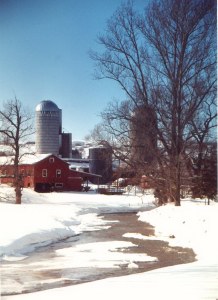Graduated filters
120, 121 Gray
122, 123 Blue
124, 125 Tobacco
126, 127 Mauve
128, 129 Pink
130, 131 Emerald
132, 133 Yellow
Special effects with Striking Graduations
150 151 Fog
The need for the Cokin Graduated filters, specially designed for color, arose from the advances in color photography, These filters are made in a wide range of compound colors that blend harmoniously into the image, They permit selective color enhancement or modification without changing the subject,
Use the Cokin Graduated filters to reduce the excessive brightness range that frequently arises in two parts of the picture, for instance the difference in light between the foreground and the sky in a landscape shot. Color film especially slide film has a very limited capacity to cope with this brightness range. With the Graduated filters, you can achieve a more natural rendering of such subjects.
Apart from their more technical application, the graduated filters are capable of an infinite number of effects. You're limited only by your imagination. The Graduated filters, like the Cokin Polarizer, should be part of the basic equipment of any photographer who aims for high image quality.
Principle of the Cokin Graduated filters
The dense area covers less than half of the filter but can be adjusted vertically and by rotation. In fact, there is no need to split the image into precisely equal parts.
The Cokin Graduated filters permit infinitely variable renderings depending on the distance of the filter from the lens, the position of the filter in the holder and the density of the graduated filter used.
The effect of a graduated filter is very pronounced when the shot is taken with a super wide-angle lens at a small aperture, The short focal length and large depth of field combine to make the transition to color clear and distinct, Conversely, the effect will be subdued and the transition to color will be subtle when the shot is taken with a telephoto lens at a large aperture,
Contrast control
With the Graduated filters, you can reduce the brightness range of an excessively contrast image, By subduing bright areas (sky, water, snow, sand), the filters bring the contrasting light within a range that color film emulsions can handle.
This particularly important with super-wide angle lenses 17 to 24 mm which cover not only views of great breadth but also of considerable brightness, Consider a landscape. Because of the difference in brightness between sky and foreground, the sky is actually overexposed, and appears colorless and uninteresting, A Cokin Graduated gray filter reduces this difference by bringing out the clouds. A Graduated Blue restores the sky to its natural color, even if it is overcast or if you shoot against the light. Indoors or in town the graduated filters can reduce the intensity of light sources in the picture. They reduce flare and ghost images in the lens and improve subject contrast. Have you noticed that with a flash the foreground is often overexposed ? A Graduated gray filter (or two such filters combined) can restore the balance between the main subject and the foreground/background.
Cokin Graduated filters can be combined with each other, either in similar positions or with the densities opposed, to selectively color certain portions of the subject. The pink or tobacco filters, for instance, can enhance sunset effects,
Helpful hints :
Carefully adjust the height of the filter in the holder and check the result in the view- finder, stopping down the lens to check depth of field. Check also for vignetting when using the A Series filters with certain ultra-wide-angle lenses. Cokin Graduated Filters can be used in combination with virtually all filters of the Cokin system. Graduated filters can even be combined with each other if the effect of one Filter is not enough.
A typical graduated filter is longer than it is wide. This is to allow you to position the transition line between the filtered and non-filtered portions at almost any point in the image.
Use more than one Grad if you have too
*When using color-print film and using filters to apply special colors to your images, notify your Photo-finishing agent. Most use computerized printers today and these will try to color-correct to operator input standards, thus possibly removing what you have added.
 A bright landscape that needs color and balancing with the contrast of the sky. A Gradual Blue tones down the sky and adds color.
A bright landscape that needs color and balancing with the contrast of the sky. A Gradual Blue tones down the sky and adds color. "The only problem with using colored Cokin filters is that the sky will be one color and the bottom portion of the image will be another color (ie: the sky is "pink" and the water is "blue". Photo buyers will generally reject images like this as they do not appear "REAL". To make this image look "real", simply put a 1 stop colored filter upside down to color the bottom portion of the image. Then put a 2 stop (or whatever density you want) on the camera in the "normal" fashion. This will give you the most realistic image!!"
Good advice from Darwin A. Mulligan
All of the photos on this page and this entire site will remain the exclusive property of their original owners. No photo may be reproduced or used in any way without the authorization of the owner.